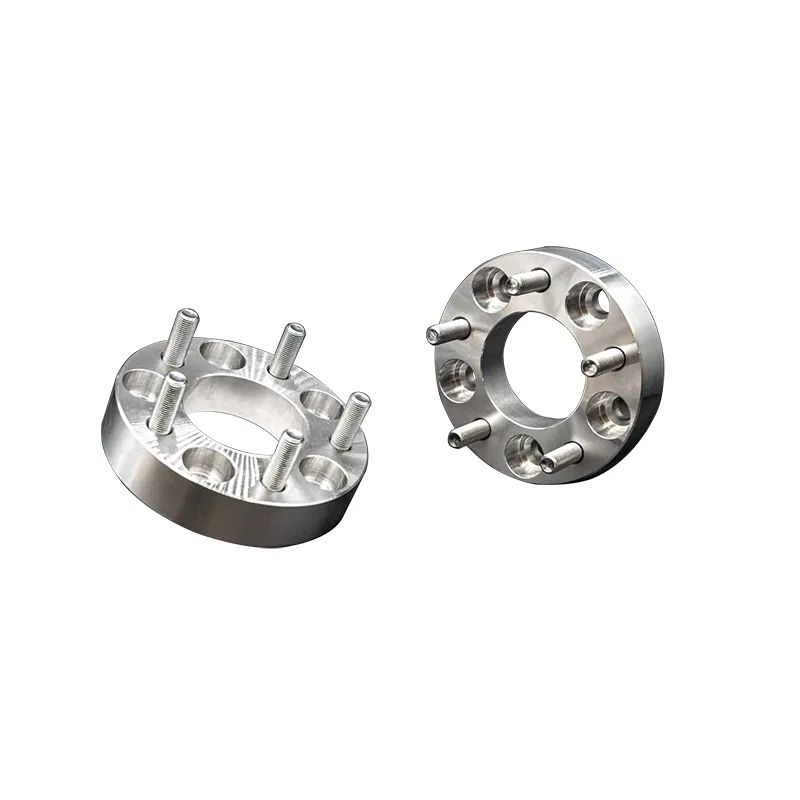Everything You Need to Know About Billet Wheel Adapters: A Comprehensive Q&A
2024-11-04
If you’re a car enthusiast looking to upgrade your vehicle's wheels, you’ve probably come across billet wheel adapters. These components are essential for achieving the perfect fit and enhancing your vehicle's performance. In this blog, we’ll answer some common questions about billet wheel adapters to help you understand their functionality, benefits, and considerations.
What exactly are billet wheel adapters?
Billet wheel adapters are specially designed components that allow you to fit wheels onto a vehicle that has a different bolt pattern or offset. They are typically made from solid blocks of aluminum, known as "billet," which makes them strong and durable. Billet wheel adapters serve as a bridge between your vehicle’s hub and the wheels you wish to install, ensuring a secure fit.
Why would I need to use billet wheel adapters?
There are several reasons to consider using billet wheel adapters:
1. Compatibility: If you want to install wheels from a different make or model, adapters allow you to match different bolt patterns.
2. Customization: They can help achieve a desired offset for your wheels, giving your vehicle a more aggressive stance.
3. Performance: Adjusting the track width with adapters can enhance handling and stability during driving.
4. Aesthetic Appeal: Billet adapters allow you to explore various wheel designs and finishes, adding a personal touch to your vehicle.
How do I choose the right billet wheel adapters?
Selecting the appropriate billet wheel adapters involves considering the following factors:
1. Bolt Pattern: Ensure the adapter's bolt pattern matches both your vehicle’s hub and the wheels you intend to use.
2. Thickness: The thickness of the adapter will influence the offset, so choose a size that meets your aesthetic and performance needs without causing clearance issues.
3. Material Quality: Look for high-quality materials like aircraft-grade aluminum to ensure durability and performance.
4. Weight Rating: Check that the adapters can handle the weight and stress associated with your specific wheel and tire setup.
Are there any downsides to using billet wheel adapters?
While billet wheel adapters have many advantages, there are potential downsides to be aware of:
1. Increased Weight: The additional weight from adapters can affect performance, particularly in racing scenarios.
2. Alignment Concerns: Improper installation may lead to misalignment, negatively impacting handling and tire wear.
3. Stress on Components: Using adapters can place added stress on the vehicle's hub and suspension, leading to increased wear over time.
4. Regulatory Restrictions: Some racing organizations may have rules against the use of wheel adapters, so it’s important to verify before participating.
What is the installation process for billet wheel adapters?
Installing billet wheel adapters is a relatively straightforward process, but it requires careful attention to detail:
1. Gather Tools: You will need a jack, jack stands, a torque wrench, and the correct size sockets for your lug nuts.
2. Lift the Vehicle: Use the jack to lift the vehicle and secure it with jack stands.
3. Remove Existing Wheels: Take off the current wheels by loosening and removing the lug nuts.
4. Install the Adapters: Align the adapters with your vehicle’s hub, securing them in place with the provided lug nuts. Make sure they are tightened to the manufacturer’s specifications.
5. Attach the New Wheels: Once the adapters are securely fastened, mount your new wheels onto the adapters, tightening the lug nuts in a star pattern for even distribution of pressure.
6. Double-Check: After installation, lower the vehicle and recheck the torque on all lug nuts to ensure they are secure.
How can I maintain my billet wheel adapters?
Maintaining your billet wheel adapters is crucial for ensuring safety and longevity:
1. Regular Inspections: Periodically check for any signs of wear or damage, as well as the tightness of the lug nuts.
2. Keep Them Clean: Remove any dirt or debris to prevent corrosion and maintain their appearance.
3. Re-Torque After Installation: After driving for a few hundred miles, re-torque the lug nuts to ensure everything remains tight.
4. Avoid Overloading: Be mindful of the weight limits of your adapters to prevent damage.
Can I use billet wheel adapters on any vehicle?
Billet wheel adapters can be used on many vehicles, but it’s important to ensure compatibility. Different makes and models have various bolt patterns, hub sizes, and offset requirements. Always check the specifications of both your vehicle and the wheels you plan to install. If you’re uncertain, consult with a professional for guidance.
Conclusion:
Billet wheel adapters are a fantastic solution for car enthusiasts looking to customize their wheel setups. By understanding their purpose, how to choose the right adapters, and the installation and maintenance processes, you can make informed decisions that enhance your vehicle's performance and appearance. Whether you’re aiming for better fitment or a more aggressive look, billet wheel adapters can help you achieve your goals while ensuring safety on the road.



